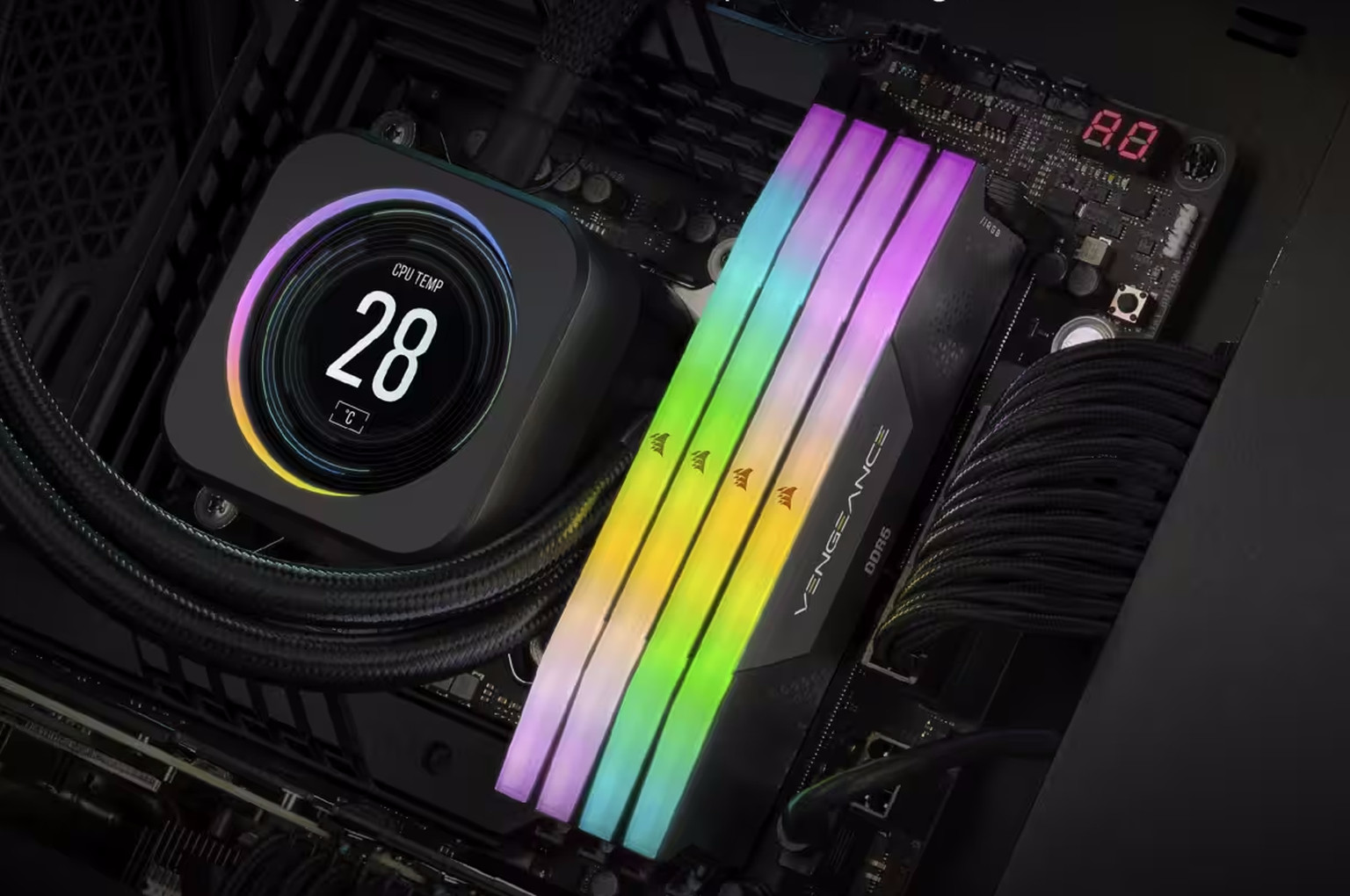Problems due to UV radiation from RGB LEDs?
A curious “scandal” has now surfaced on the Internet: it seems that decorative RGB LEDs in your computer may not be a purely cosmetic feature that has no effect on the hardware. Users on social media have noticed that the illumination can leave an irreversible mark on your hardware, so to speak, such as on a graphics card that you have next to your RGB memory. Whether this can also have adverse effects on users is hard to say.
Users with graphics cards from MSI, Asus and Gigabyte appeared on Reddit saying their backplates had traces burned in from memory modules that were installed in the slots above the back of the graphics card. Apparently, this is a “bleaching” of the dye in the material caused by the light from the RGB LEDs on the neighboring DDR4 or DDR5 modules, whose traces are clearly visible on the photos shown. Some memory seem to glow strongly enough to lead to this.
The color can probably get bleached (faded out) by ordinary visible light or thermal radiation as well, but given the intensity it is possible that these users had installed memory modules (in one case it was the Vengeance RGB from Corsair) equipped with RGB LEDs that emit some ultraviolet (UV) radiation in addition to the visible spectrum light. This means various other plastic components, or the color finishes on components, may be affected by the same phenomenon. The fact that the thing has manifested itself on the graphics cards of the users is probably more of a coincidence.
- Source: Did my brother’s GPU get bleached by RAM?
- Source: ram light burned onto gpu
UV from RGB LED?
While this should not affect the functioning in the case of the graphics cards, it could theoretically have an effect on the user. UV radiation has a negative effect on health and exposure to it can be associated with damage to eyesight, changes to DNA in skin cells and possibly cancer. It’s hard to say whether the radiation from the computer hardware in question is at such an intensity that it could lead to an increased risk of health problems – there’s a decent chance it isn’t.
The glass on the side panel of the computer should block at least part of the UV radiation. However, it is only impermeable to the medium and short wavelengths of UVC and UVB radiation, while longer-wavelength UVA radiation above roughly 300–350 nm, mostly passes through glass.
However, UVA radiation should be the least harmful of the UV spectrum, which is why it is also used for various decorative fluorescent purposes (known as black light). Twenty years ago, UV lamps and fluorescent fans made of transparent plastic, which would glow when illuminated by the UV source, were also quite popular as decorations inside enthusiast PCs, by the way.
It should be said that you glass windows let UVA in from the outdoors as well, and you’re likely to get much larger doses when you’re outdoors, generally. UVA could be dangerous with prolonged exposure and especially if you were staring into the source of the radiation, which is probably what can happen with RGB LEDs in a computer, because you can have components in your field of vision while you work and it hardly anyone would expect that looking at the LEDs could be harmful.

It’s quite possible that a lot of RGB LED components that are manufactured in various places in Asia may not be tested for the UV levels they emit, and various hardware based on these LEDs that gets imported to our markets is probably not tested for those effects either. On the other hand, when pronounced fading of colors like this is observed, the reason could also be that the dye used in the material is of poor stability. Usually the color would age uniformly across the whole device so no one would notice the fading, but when a nearby LED permanently illuminates fixed spots on the card, the dye ageing becomes noticeable.
It could be worse, for example if some material used to build hardware components was becoming brittle due to these effects. In the now distant past, certain types of EPROM BIOS chips were used on motherboards that were not erasable electronically but would be erased by application of UV light. The “window” that is opened in the chip package for this purpose is located on the underside though, and any motherboard using such EPROM is probably not going to be used with modern RGB LEDs.
Sources: Reddit (1, 2), VideoCardz
English translation and edit by Jozef Dudáš
⠀⠀








